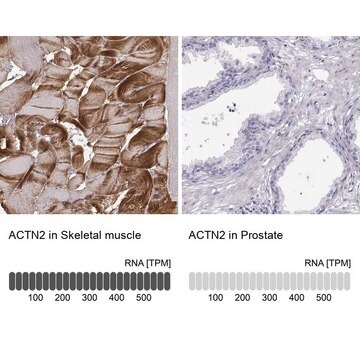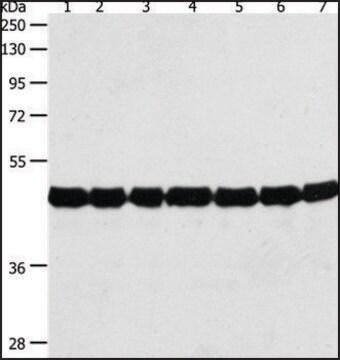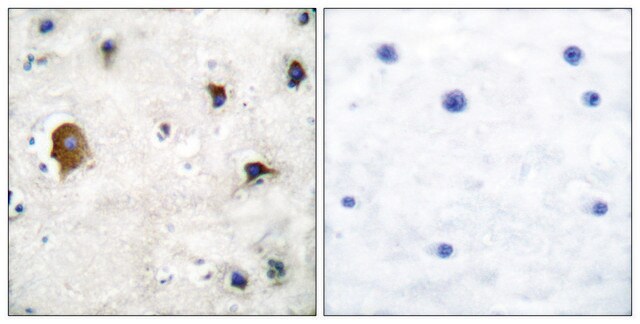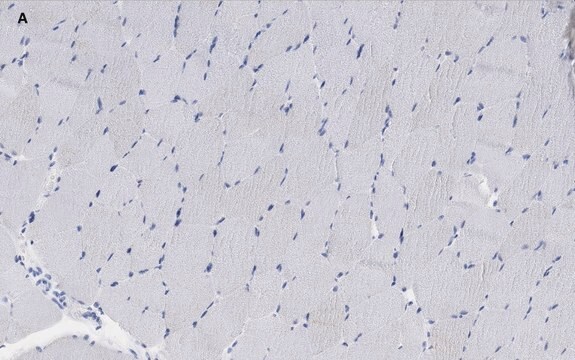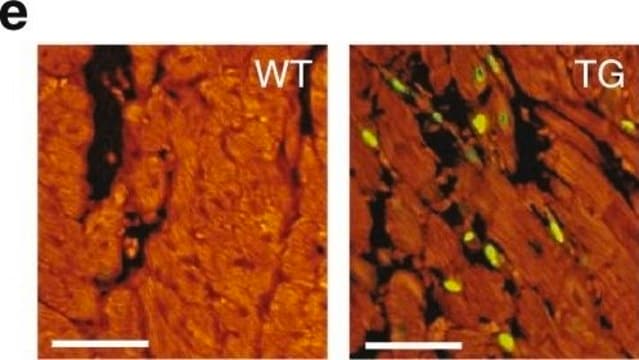Key Documents
A2543
Anti-α-Actinin antibody produced in rabbit
whole antiserum
Synonim(y):
Anti-CMD1AA, Anti-CMH23, Anti-MPD6, Anti-MYOCOZ
About This Item
Polecane produkty
pochodzenie biologiczne
rabbit
białko sprzężone
unconjugated
forma przeciwciała
whole antiserum
rodzaj przeciwciała
primary antibodies
klon
polyclonal
zawiera
15 mM sodium azide
reaktywność gatunkowa
chicken
metody
indirect immunofluorescence: 1:500 using cultured chicken fibroblasts
western blot: suitable using cultured cells and chicken gizzard extract
Warunki transportu
dry ice
temp. przechowywania
−20°C
docelowa modyfikacja potranslacyjna
unmodified
informacje o genach
chicken ... ACTN2(396263) , ACTN4(396024)
Opis ogólny
Specyficzność
Immunogen
Zastosowanie
- co-immunoprecipitation studies
- immunoblotting studies
- immunofluorescence
Działania biochem./fizjol.
Postać fizyczna
Przechowywanie i stabilność
Oświadczenie o zrzeczeniu się odpowiedzialności
Nie możesz znaleźć właściwego produktu?
Wypróbuj nasz Narzędzie selektora produktów.
Kod klasy składowania
10 - Combustible liquids
Klasa zagrożenia wodnego (WGK)
WGK 3
Temperatura zapłonu (°F)
Not applicable
Temperatura zapłonu (°C)
Not applicable
Certyfikaty analizy (CoA)
Poszukaj Certyfikaty analizy (CoA), wpisując numer partii/serii produktów. Numery serii i partii można znaleźć na etykiecie produktu po słowach „seria” lub „partia”.
Masz już ten produkt?
Dokumenty związane z niedawno zakupionymi produktami zostały zamieszczone w Bibliotece dokumentów.
Klienci oglądali również te produkty
Nasz zespół naukowców ma doświadczenie we wszystkich obszarach badań, w tym w naukach przyrodniczych, materiałoznawstwie, syntezie chemicznej, chromatografii, analityce i wielu innych dziedzinach.
Skontaktuj się z zespołem ds. pomocy technicznej



